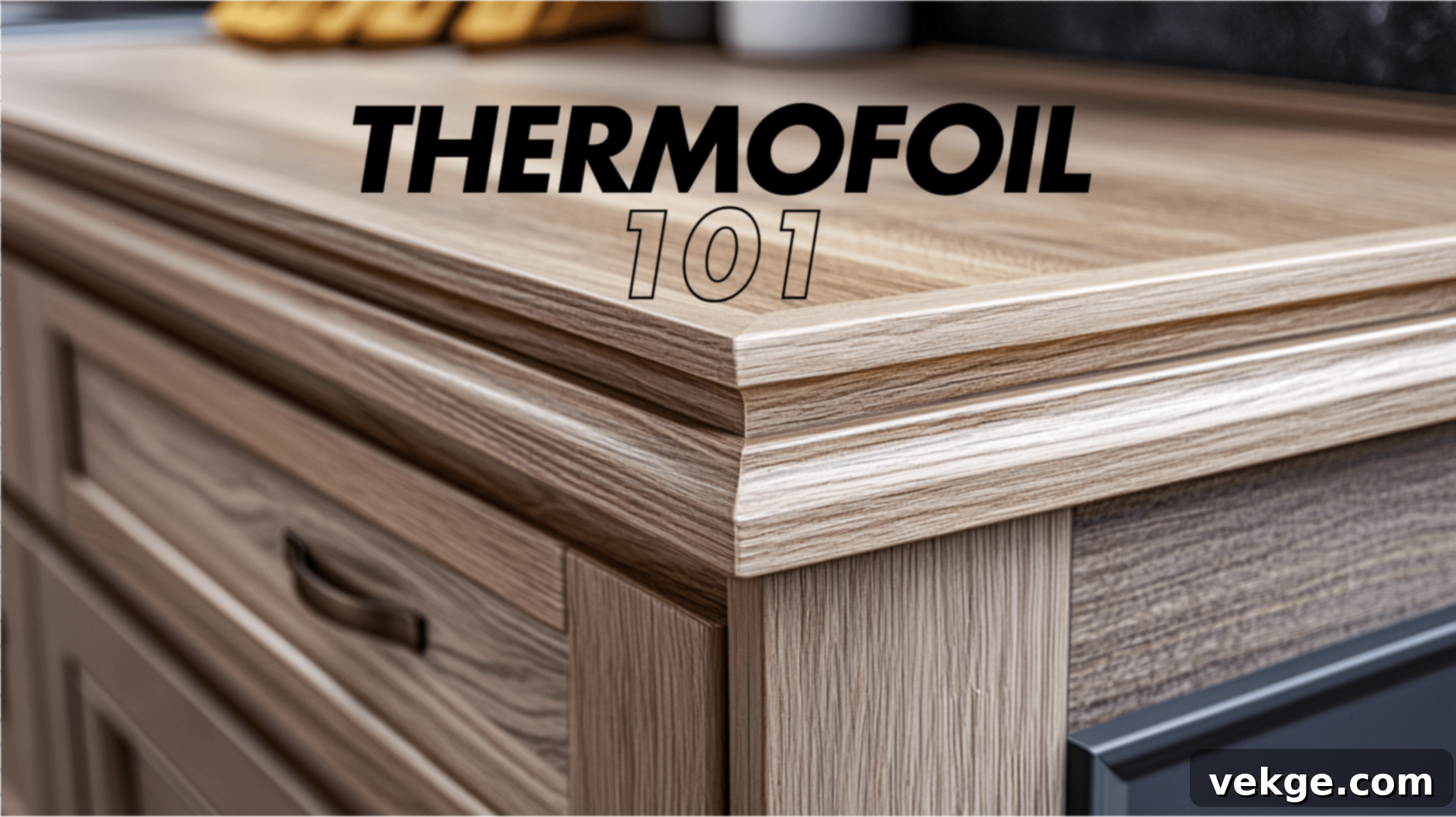Thermofoil Cabinets: The Ultimate Guide to Affordable & Stylish Kitchen Updates
Are you dreaming of a modern kitchen or bathroom makeover but concerned about the high costs? Thermofoil cabinets offer an excellent and practical solution for today’s homes. These versatile cabinets skillfully blend attractive aesthetics with budget-friendly prices, making them a popular choice for homeowners seeking both style and savings.
In contemporary interior design, many homeowners are increasingly choosing thermofoil for their cabinetry needs. They stand out as a highly effective and visually appealing alternative to traditional solid wood options, which often come with a much heftier price tag and require more intensive maintenance.
Beyond their initial affordability, thermofoil surfaces are remarkably easy to maintain, staying clean with minimal effort. They are available in an impressive array of styles, colors, and finishes, ensuring you can find the perfect match to complement your home’s existing décor or to create a completely new design aesthetic.
Essentially, thermofoil functions as a durable, protective coating for your cabinet components. It involves a thin, yet robust, vinyl layer that is carefully bonded to the cabinet surface using a heat and pressure process. This advanced manufacturing method results in incredibly smooth, long-lasting finishes that are often significantly more economical than cabinets painted by hand or crafted from solid wood. Let’s dive deeper into why these modern cabinets might be the ideal choice for your upcoming home renovation project.
What Exactly is Thermofoil? Understanding the Material and Process
The term thermofoil itself offers a clue to its composition: “thermo” refers to heat, and “foil” denotes a thin sheet. This innovative material combines a thin layer of vinyl (the “foil”) with a sturdy, wood-like base material, most commonly MDF (Medium-Density Fiberboard). MDF is an engineered wood product made from wood fibers, wax, and a resin binder, pressed together under high temperature and pressure.
Manufacturers produce thermofoil cabinets through a specialized and precise process. First, the MDF boards are cut into the desired cabinet door or drawer front shapes. Then, a vinyl coating is applied to these shaped boards using a combination of heat and vacuum pressure. This method creates an exceptionally strong, seamless bond between the vinyl and the MDF substrate. Unlike simple adhesive applications, this heat fusion process ensures a tight, durable seal, often wrapping around the edges and corners to prevent any gaps or loose spots.
The foundation of thermofoil, MDF, begins as tiny wood fibers, often recycled from sawmill waste, which are then mixed with wax and a resin. These components are then joined under intense pressure and heat, forming a dense, stable, and strong foundation that is perfectly suited for the vinyl coating. This engineered core provides a consistent surface, free from the knots and grain irregularities found in natural wood, which contributes to the smooth finish of thermofoil.
This sophisticated heat fusion method fundamentally differs from simpler, glue-on coverings. The thermal bonding creates a significantly stronger, more resilient connection than adhesive alone could achieve. This process not only seals every edge and corner meticulously, eliminating potential weak points, but it also results in cabinet surfaces that look uniformly smooth and impeccably clean. The finished product feels solid and robust, and crucially, all pieces maintain a consistent color and finish, ensuring a cohesive look across your entire kitchen or bathroom.
Thermofoil vs. Other Cabinet Materials: A Comparative Look
When considering cabinet options for your home, it’s essential to compare thermofoil with other popular materials like laminate and solid wood. Each material offers distinct characteristics in terms of cost, durability, maintenance, and overall aesthetic. Understanding these differences will help you make an informed decision that aligns with your budget and lifestyle.
| FEATURE | THERMOFOIL | LAMINATE | WOOD |
|---|---|---|---|
| Bonding Method | Heat and vacuum pressure for a seamless wrap | Glue, typically applied as a flat sheet | N/A (solid material) |
| Water Resistance | High (due to sealed vinyl wrap) | Moderate (edges can be vulnerable) | Prone to water damage without proper sealing |
| Maintenance | Low daily upkeep; easy wipe-clean surface | Moderate upkeep; generally easy to clean | Regular painting, staining, and sealing required |
| Durability | Moderate (resistant to chips, but sensitive to high heat) | Moderate (good scratch resistance, but can chip) | High (can be refinished; can dent) |
| Cost | Lower than wood; competitive with laminate | Lower than wood; competitive with thermofoil | Higher than thermofoil and laminate |
| Repairability | Difficult to repair if vinyl is damaged or peels | Moderate repair options for minor chips or delamination | Easily touched up, sanded, or repainted |
| Weight | Heavier than wood (due to MDF core) | Similar to thermofoil (MDF core) | Generally lighter than engineered wood products |
| Customization | Retains original look; limited change once installed | Limited to the original finish; difficult to alter | Highly customizable (can be repainted, stained, distressed) |
| Best Use | Kitchens, bathrooms (excellent moisture resistance) | Kitchens, bathrooms, offices, utility areas | High-end cabinetry, traditional designs, custom finishes |
As you can see, thermofoil excels in moisture resistance and low maintenance, making it a strong contender for high-humidity areas. While wood offers superior durability and repairability, it comes at a premium cost and requires more consistent upkeep. Laminate provides a good middle ground, though its water resistance is typically less robust than thermofoil.
Versatile Applications of Thermofoil Cabinets in Your Home
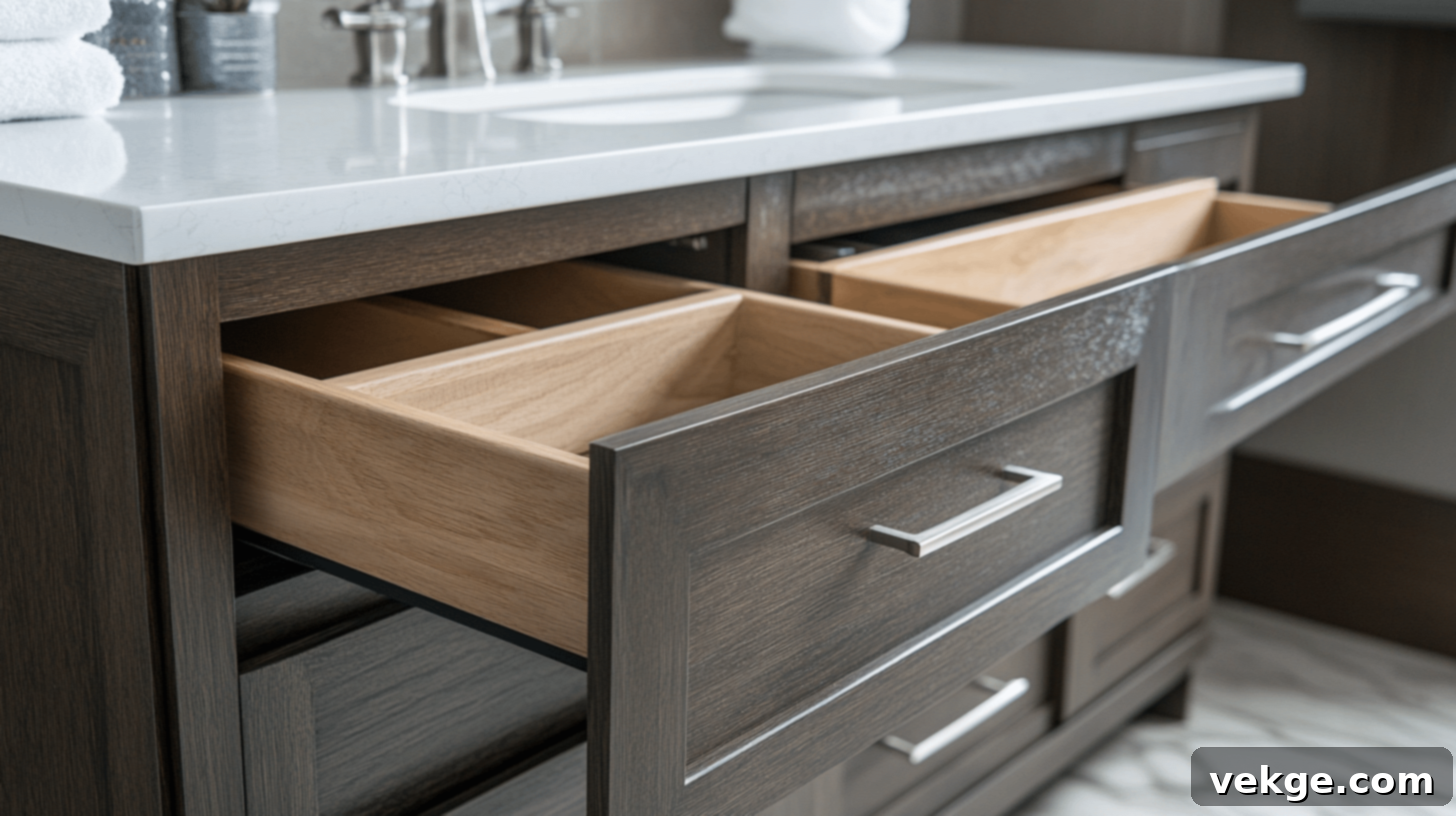
Thermofoil’s inherent qualities make it suitable for various spaces within your home, particularly where durability, easy cleaning, and moisture resistance are paramount. Let’s explore where thermofoil truly shines.
1. Kitchen Cabinets: A Smart Choice for the Heart of Your Home
- Withstands Daily Splashes: The sealed vinyl surface effectively repels water, making it ideal for the splashes and spills common in a busy kitchen.
- Handles Food Stains Well: Its non-porous surface prevents food stains from soaking in, allowing for quick and complete removal.
- Wipes Clean with Simple Soap: Maintenance is a breeze; a soft cloth, mild soap, and water are usually all you need to keep them sparkling.
- Fits Modern and Classic Styles: Available in a vast array of colors and finishes, thermofoil can mimic the look of painted wood, high-gloss contemporary designs, or even some wood grains, fitting diverse kitchen aesthetics.
- Works for Both Base and Wall Units: Its versatility extends to all cabinet types, providing a cohesive look throughout your kitchen layout.
2. Bathroom Vanities: Perfect for High-Humidity Environments
- Resists Bathroom Moisture: The vinyl wrap acts as a barrier against humidity and steam, preventing swelling and warping common with other materials.
- Keeps Its Color in Steamy Conditions: Unlike some painted surfaces that can fade or yellow, thermofoil maintains its vibrant color even in consistently steamy conditions.
- Stops Water from Soaking into Surfaces: This protective layer ensures that accidental splashes around the sink won’t compromise the integrity of your vanity.
- Makes Cleaning Quick and Simple: The smooth, non-porous finish prevents mold and mildew buildup, making daily cleaning effortless.
- Suits Any Bathroom Size: From small powder rooms to large master ensuites, thermofoil vanities offer practical beauty for any space.
3. Other Versatile Uses for Thermofoil
- Makes Durable Office Desks: Its resilient surface can withstand daily wear and tear in home offices.
- Works Well for Bedroom Furniture: Provides a clean, modern look for dressers, nightstands, and wardrobes.
- Suits Entertainment Centers: Offers a sleek and easily cleanable surface for media consoles.
- Creates Lasting Closet Doors: Ideal for sliding or hinged closet doors, resisting fingerprints and general grime.
- Functions in Retail Store Displays: Its durability and easy maintenance make it a practical choice for commercial settings.
These diverse applications clearly demonstrate thermofoil’s wide range and adaptability. The material can effectively meet numerous functional and aesthetic needs while consistently remaining a cost-effective option for various home and even commercial projects.
Important Note: For optimal longevity and appearance, always select installation spots away from direct, intense heat sources (like constantly opening oven doors without proper heat shields) when using thermofoil products.
Key Advantages of Choosing Thermofoil Cabinets for Your Home
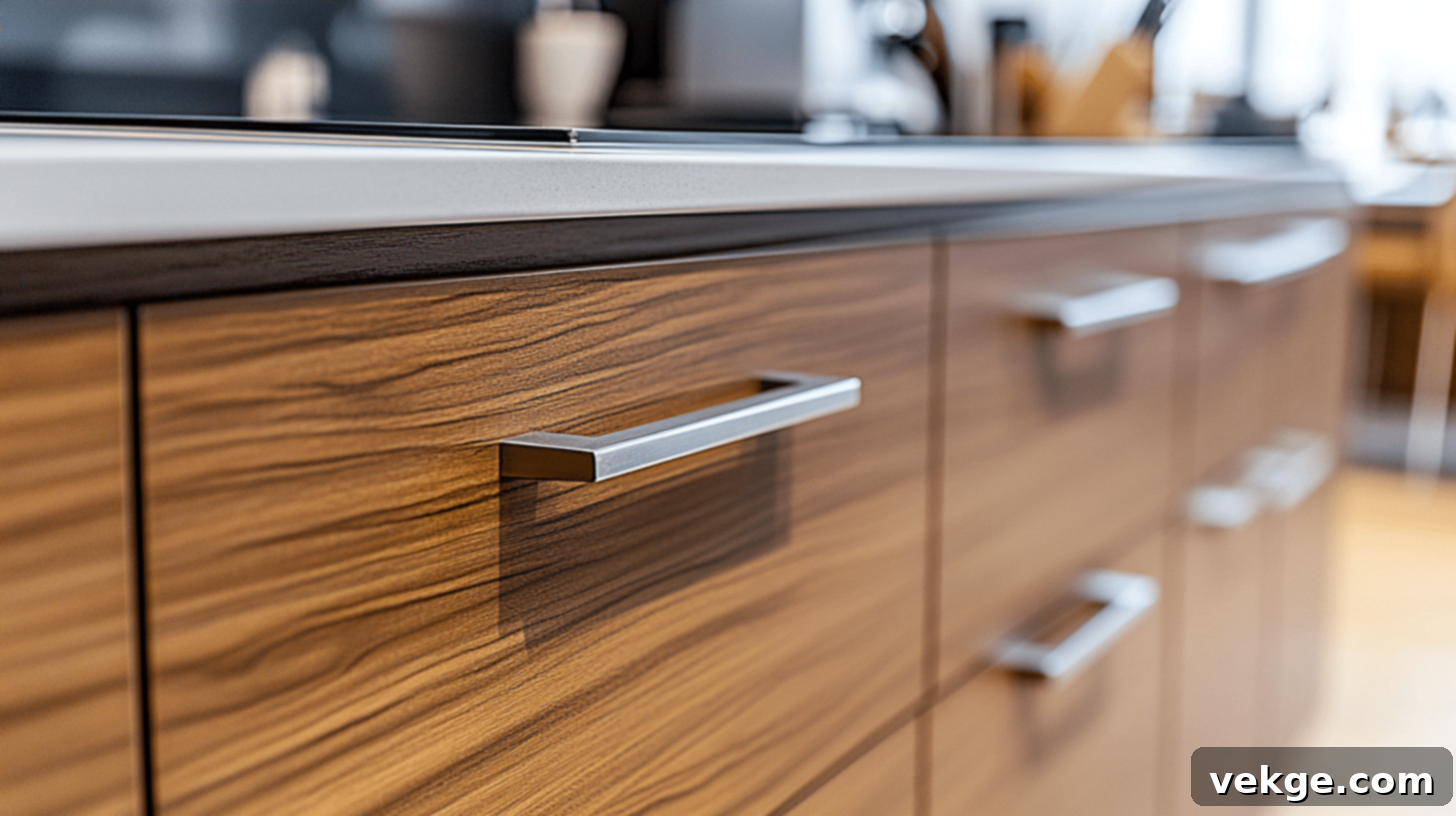
1. Cost-Effective Solution for Home Renovations
Budget is often a primary consideration when undertaking any home improvement project. Thermofoil cabinets present a significant financial advantage, costing considerably less than comparable solid wood options. This affordability extends beyond the initial purchase; you won’t incur additional expenses for painting, staining, or specialized wood cleaners. This makes them an ideal choice for homeowners looking to achieve a high-end look without overspending on their kitchen or bathroom remodel.
2. Exceptionally Simple Maintenance and Cleaning
One of the most appealing benefits of thermofoil surfaces is their incredible ease of maintenance. Daily cleaning becomes a remarkably simple task: a quick wipe with a soft cloth and mild soap and water is sufficient to remove most marks, spills, and grime. The smooth, non-porous nature of the vinyl surface effectively prevents stains from setting in, eliminating the need for aggressive scrubbing or the use of harsh, specialized cleaning products. This ease of care translates directly into significant savings of both your valuable time and money over the long term.
3. Enhanced Visual Appeal and Design Versatility
Thermofoil cabinets possess an inherent aesthetic appeal that can enhance virtually any interior setting. They are available in a vast selection of colors, patterns, and finishes, including options that convincingly mimic the look of natural wood grains or sophisticated high-gloss lacquers. This wide variety ensures you can perfectly match your existing décor or boldly create a completely new style. The finish remains consistently even across all surfaces, without the common issues of streaks, brush marks, or patches that can appear with painted cabinets over time. Your thermofoil cabinets will retain their fresh, pristine look for many years, contributing to a polished and cohesive home environment.
4. Excellent Long-Term Value and Durability
With appropriate care and maintenance, thermofoil cabinets are designed to last an impressive 15 years or even longer. Their sealed vinyl surfaces offer superior resistance to water damage compared to many other cabinet materials, and unlike wood, they never require fresh paint or stains. This extended lifespan, combined with their lower initial cost and minimal maintenance needs, makes them a wise investment that delivers significant value over their operational lifetime.
5. Significant Home Enhancement on a Budget
Thermofoil is an adaptable choice suitable for both brand-new constructions and existing homes undergoing renovations. Its application extends beyond kitchens and bathrooms, making it a viable option for various other living spaces. The material is engineered to withstand the rigors of daily use without losing its visual appeal or structural integrity. By choosing thermofoil, you can noticeably enhance the aesthetic and functional value of your home, creating a modern and inviting atmosphere, all without exceeding your budget.
Potential Disadvantages of Thermofoil Cabinets: What to Consider
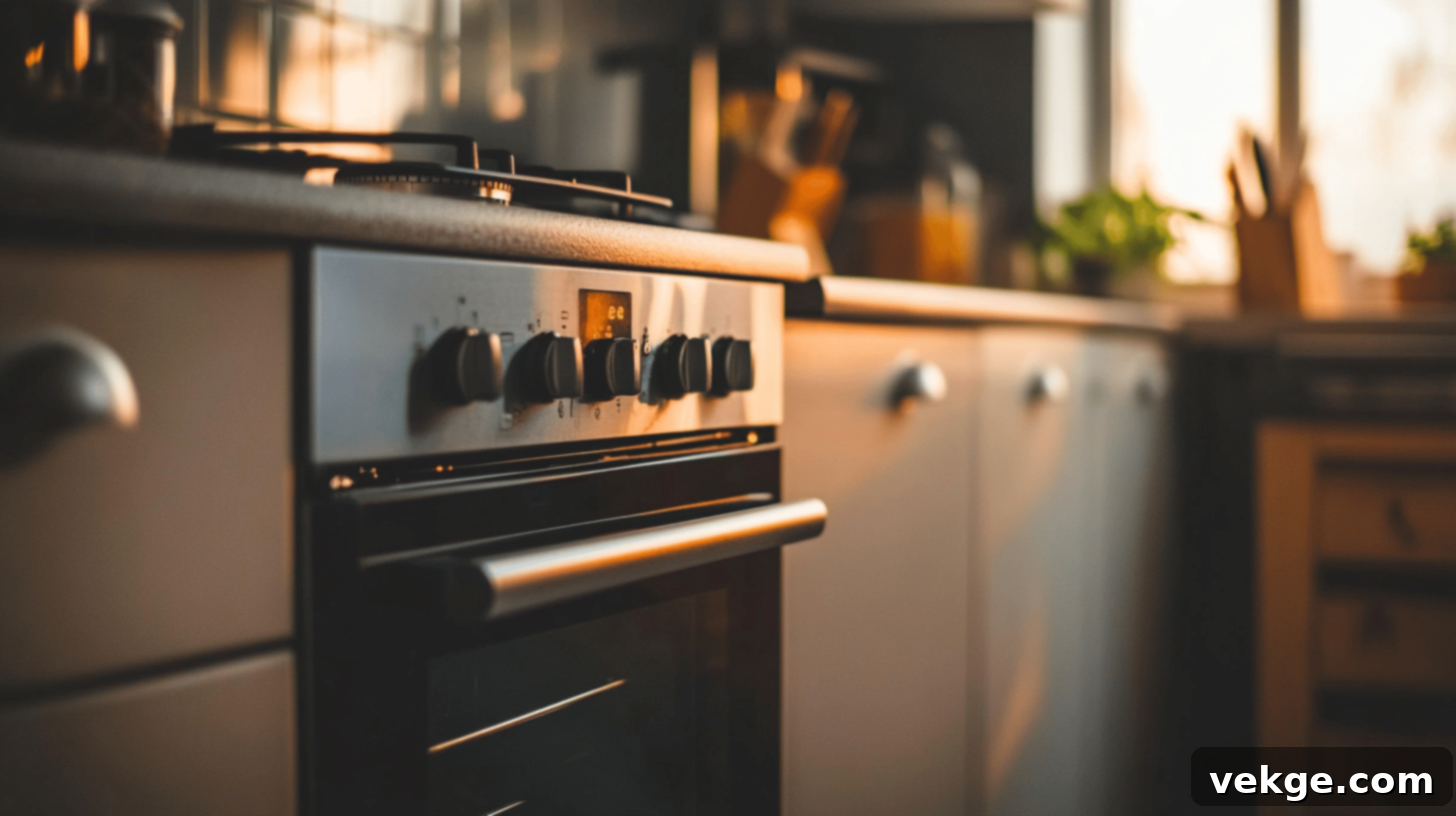
While thermofoil cabinets offer many benefits, it’s crucial to be aware of their potential drawbacks to ensure they are the right fit for your specific needs and lifestyle.
1. Vulnerability to High Heat
One of the most significant weaknesses of thermofoil is its susceptibility to direct and intense heat. Areas near ovens, dishwashers (especially without a heat shield), or toasters can experience damage. Excessive heat can cause the vinyl layer to soften, bubble, discolor, or even peel away from the MDF core, a process known as delamination. To mitigate this risk, it’s highly recommended to install heat shields or panels in areas adjacent to high-heat appliances. Without adequate protection, the integrity and appearance of your thermofoil cabinet surfaces can be compromised.
2. Limited Repair Options for Damage
Unlike solid wood, which can be sanded, filled, and repainted to repair damage, thermofoil does not offer this flexibility. If a thermofoil surface experiences chips, deep scratches, or significant peeling, spot repairs are generally ineffective and often worsen the appearance. In most cases, extensive damage requires the full replacement of the affected cabinet door or drawer front. This can be more costly and inconvenient than minor touch-ups possible with other materials, as finding an exact match for an older finish can be challenging.
3. Lifespan and Time Concerns
While durable, thermofoil cabinets typically have a shorter expected lifespan compared to high-quality solid wood cabinetry. They usually require replacement after 15 to 20 years. Over time, the vinyl covering may naturally begin to separate from the edges, particularly in high-use areas or those exposed to moisture. Aging can also make the surface more brittle and thus more susceptible to chipping or peeling. While regular upkeep can certainly extend their life, it cannot entirely prevent the eventual wear and tear associated with the material’s nature.
4. Increased Weight Issues During Installation
Due to their MDF core, thermofoil cabinets tend to be significantly heavier than solid wood cabinets of comparable size. This increased weight can present challenges during installation, potentially requiring extra wall reinforcement to ensure secure mounting. Furthermore, the weight often necessitates professional assistance for installation, adding to the overall project cost and making DIY setup more difficult and potentially risky without the right tools and expertise.
5. Potential Impact on Resale Value
While thermofoil offers excellent initial value, some discerning home buyers might perceive them as a less premium option compared to genuine solid wood cabinets, which could potentially impact your home’s resale value. Wood options are often associated with higher quality and longevity in the real estate market and may bring better returns on investment for certain demographics. It’s wise to consider your long-term plans for your home and local market preferences when making material choices for renovations.
Detailed Cost and Expense Considerations for Thermofoil Cabinets
Understanding the full financial picture of thermofoil cabinets goes beyond the initial price tag. Here’s a comprehensive breakdown of the typical expenses you can expect.
| CATEGORY | THERMOFOIL CABINETS |
|---|---|
| 1. Initial Purchase Price | Thermofoil cabinets are generally priced around $300-$500 per linear foot, making them significantly more affordable than solid wood alternatives, which can range from $500-$1,200+ per linear foot. Always look for sales, promotions, and bulk discounts from suppliers or retailers. |
| 2. Installation Costs | Professional installation typically costs between $50 – $150 per cabinet box, depending on complexity and regional labor rates. DIY setup is possible but requires specific tools (e.g., level, drill, stud finder) and a good understanding of cabinetry. Additional costs should be budgeted for handles, pulls, and other hardware, which can range from $5-$50 per piece. |
| 3. Maintenance Expenses | Maintenance costs are remarkably low. Regular cleaning only requires basic soap and water with a soft cloth. There is absolutely no need for special wood oils, polishes, waxes, or regular repainting/restaining, which represent significant savings compared to wood. |
| 4. Repair Budgets | Minor repairs, such as re-gluing a slightly peeling edge, might cost $100 – $200 for professional service or minimal for DIY. However, for significant damage like large peeling areas, bubbling, or deep chips, a full door or panel replacement is usually necessary. Replacing an entire kitchen’s worth of thermofoil doors and drawer fronts can range from $3,000 – $5,000, depending on the number of units and material costs. |
| 5. Long-Term Value | The average lifespan of thermofoil cabinets is 15-20 years with diligent care. While this is shorter than solid wood (which can last 30+ years with proper maintenance), the lower initial purchase and maintenance costs often offset this difference, providing excellent value for their operational period. |
By considering all these cost factors, you can create a realistic budget for your thermofoil cabinet project and appreciate the significant savings they offer throughout their lifespan.
Essential Care and Maintenance Tips for Thermofoil Cabinets
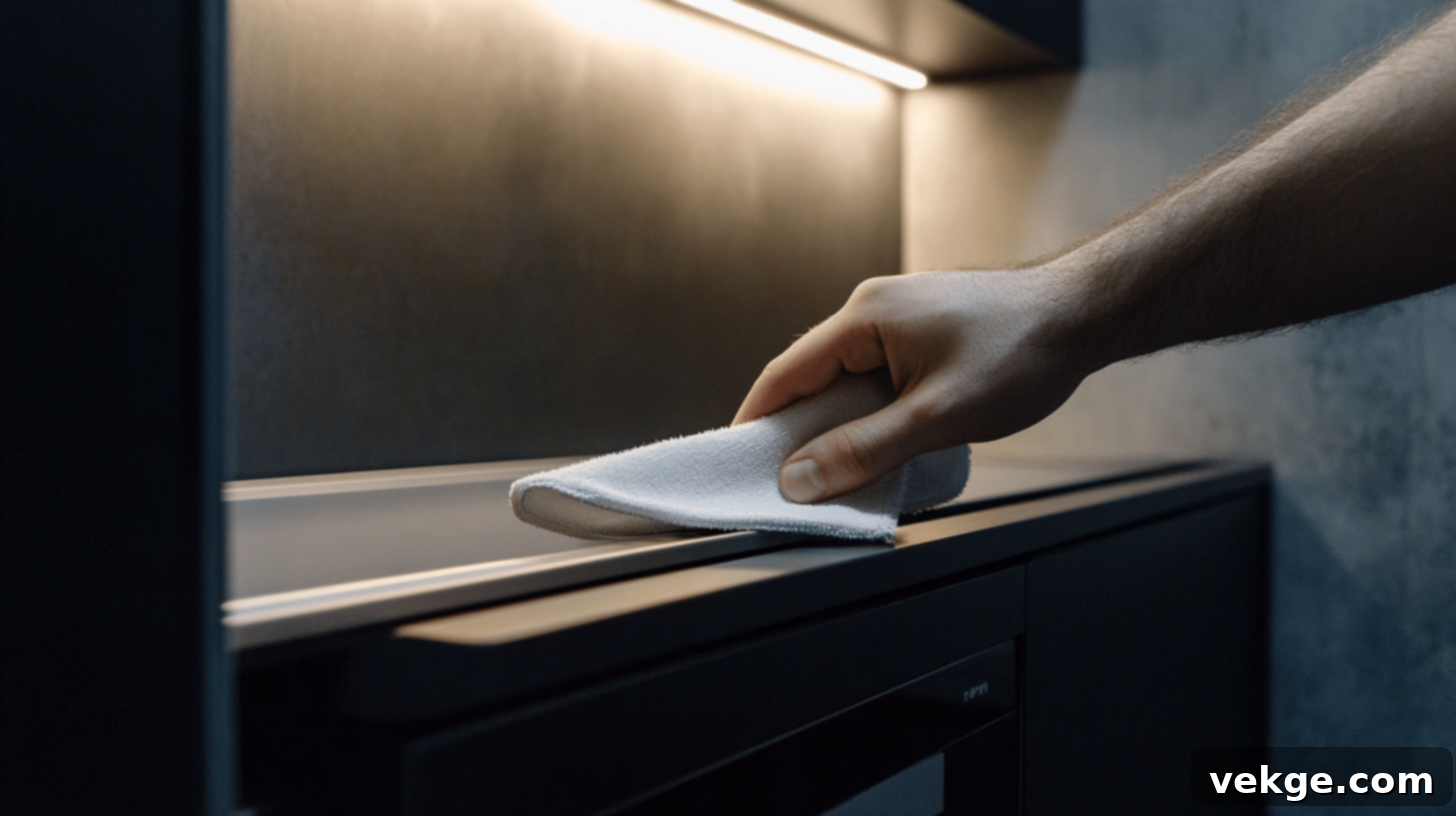
Proper care is key to maximizing the lifespan and maintaining the pristine appearance of your thermofoil cabinets. Follow these guidelines to keep them looking their best:
- Daily Cleaning Steps: For routine cleaning, always use soft cloths (like microfiber) dampened with a solution of mild dish soap and water. Gently wipe down surfaces, paying attention to areas prone to splashes and fingerprints. Never use abrasive scrubbers, steel wool, or strong chemical cleaners, as these can damage the vinyl finish. After wiping, pat surfaces dry immediately with a clean, dry cloth to prevent water spots and ensure no moisture lingers around edges.
- Heat Protection Methods: Since heat is thermofoil’s biggest enemy, implement protective measures. Install heat shields near heat-generating appliances such as ovens, ranges, and dishwashers. These shields create a barrier that deflects heat away from the cabinet surfaces. Additionally, maintain a distance of at least six inches between portable heat-making tools (like toasters, coffee makers, or slow cookers) and cabinet faces. Always use oven fans when cooking at high temperatures to vent heat and steam away from cabinetry.
- Moisture Control: While thermofoil is highly moisture-resistant, excessive standing water can still be problematic over time, especially if it finds its way into seams. Run bathroom fans during and after showers to reduce humidity. Promptly wipe away any water spots, spills, or condensation as soon as they appear, especially around sinks and dishwashers. Regularly inspect under-sink spaces for any signs of leaks or dampness and address them immediately.
- Damage Prevention: Gentle handling can significantly extend the life of your cabinets. Close doors and drawers softly to prevent hard impacts that can lead to chips or delamination. Consider installing soft-close hinges or bumpers to absorb impact. Keep sharp objects like knives or abrasive kitchen tools away from cabinet surfaces to avoid scratches. Regularly inspect edges and corners for any early signs of peeling or lifting.
- Professional Care and Inspection: Although thermofoil requires low maintenance, a yearly professional check-up can be beneficial. Experts can identify and address minor issues like loose edges or potential delamination before they escalate. Seek professional advice for any significant repairs, as DIY fixes for thermofoil can often cause more harm than good. Consider professional updates or replacements when signs of significant wear become apparent to maintain your home’s aesthetic.
Common Problems with Thermofoil Cabinets and Effective Solutions
Even with proper care, thermofoil cabinets can encounter specific issues over time. Knowing how to identify and address these common problems can help you preserve their appearance and functionality.
1. Peeling Edges or Delamination
The Problem: The vinyl film begins to lift or separate from the MDF base material, typically starting at the edges or corners. This is most often triggered by prolonged exposure to heat (e.g., from an oven or dishwasher) or excessive moisture in damp areas like bathrooms or around sink bases.
FIX: For small, isolated lifts, specialized vinyl adhesive or contact cement designed for thermofoil can be carefully applied with a small brush or syringe, then pressed firmly until dry. However, for extensive peeling, particularly across a large surface, it’s best to call experts. They can assess if the panel can be re-bonded or if full replacement is necessary. Prevention is crucial: consistent use of heat shields and diligent moisture control around susceptible areas are your best defense.
2. Uneven Color Changes or Fading
The Problem: Over time, certain cabinet parts may appear to have a different color or tone compared to others. This discoloration can be a result of prolonged, direct exposure to sunlight or inconsistent cleaning methods using various products.
FIX: To prevent sun-induced fading, use curtains, blinds, or UV-filtering window films to block direct sunlight from hitting your cabinets, especially in sunny kitchens. Ensure you use consistent and approved cleaning methods and products across all cabinet surfaces to avoid chemical reactions or residue buildup that can cause unevenness. If severe fading has occurred, the only viable solution is often to replace the badly faded doors or panels to restore a uniform appearance.
3. Water Damage Leading to Bubbling or Swelling
The Problem: Water penetrates beneath the vinyl surface, causing the MDF core to swell and the vinyl to bubble or deform. This is most common near water sources like sinks, dishwashers, and in high-humidity bathrooms.
FIX: Act immediately to dry any spills or splashes on cabinet surfaces. Regularly inspect the caulking and seals around your sinks and countertops, and repair any cracks or gaps promptly. Address plumbing leaks as soon as you spot them. Once the MDF core has absorbed water and swelled, it’s difficult to reverse. Damaged sections will likely need to be replaced entirely to prevent further deterioration and mold growth.
4. Impact Marks, Dents, or Chips
The Problem: Cabinet doors and drawers may show visible dents, dings, or chips from accidental impacts during daily use, such as banging pots or opening doors too forcefully.
FIX: Install soft-close hinges on cabinet doors and drawers to gently absorb impacts and prevent forceful closures. Use cabinet door stops or bumpers to protect doors from hitting adjacent walls or appliances too hard. Maintain clear pathways in your kitchen to minimize accidental bumps. If pieces are badly damaged with deep dents or chips that compromise the finish, replacing the affected pieces is usually the most effective way to restore the cabinet’s aesthetic integrity.
5. Loose or Wobbly Handles and Hardware
The Problem: Over time, the screws holding cabinet handles, knobs, and pulls can loosen, causing the hardware to become wobbly or even detach.
FIX: Regularly check and tighten all hardware screws with an appropriate screwdriver. Avoid overtightening, which can strip the screw holes in the MDF. If a screw hole has become stripped, use a repair kit specifically designed for MDF or wood (often involving wood filler or epoxy) to reinforce the hole before re-inserting the screw. If the hardware itself is damaged or if the holes cannot be repaired, consider installing new, potentially more robust, hardware.
Final Words: Is Thermofoil Right for Your Home?
Thermofoil cabinets undeniably offer clear and compelling benefits for homeowners seeking modern, functional, and visually appealing solutions. They stand out for their cost-effectiveness compared to traditional wood, their remarkably easy cleaning, and their commendable resistance to water damage. These cabinets are highly adaptable to a wide range of home styles and can provide reliable service for approximately 15 to 20 years with diligent care and attention to maintenance.
However, it is equally important to keep their specific limitations in mind. Their vulnerability to high heat sources, the challenges and costs associated with repairing damage (often necessitating full panel replacement), and their heavier weight during installation are all factors that warrant careful consideration. Ultimately, your choice of cabinet material should align perfectly with your home’s specific needs, your personal lifestyle, and your overall budget plans.
As you plan your renovation, thoughtfully consider your kitchen or bathroom goals. If your priority is to find low-cost, low-maintenance cabinets that offer excellent moisture resistance and a sleek, contemporary look, then thermofoil might indeed be an ideal and highly practical option for you. Conversely, if you are seeking a cabinet material that boasts an heirloom-quality lifespan of 30 years or more, offers extensive customization potential (like repainting), and holds a premium resale value, then solid wood might be a more suitable and long-term investment.
Ready to embark on your cabinet project? We encourage you to speak with local cabinet suppliers and contractors to explore the diverse options available. Compare prices, inspect various styles and finishes in person, and ask detailed questions about warranties and installation. Feel free to share your specific questions below or contact us directly for more detailed information and personalized guidance.
Frequently Asked Questions (FAQs) About Thermofoil Cabinets
Are Thermofoil Cabinets Any Good for Modern Homes?
Yes, thermofoil cabinets are an excellent choice for many modern homes, especially those seeking affordability and low maintenance. They offer a smooth, contemporary finish, are highly moisture-resistant, and come in a wide variety of styles and colors. While they are generally good, their primary limitation is their sensitivity to high heat, which can cause peeling or bubbling, unlike solid wood or some laminate options. They represent a strong value proposition for homeowners prioritizing budget and ease of care.
Is Thermofoil Better Than Laminate for Kitchens?
Both thermofoil and laminate offer durability, easy cleaning, and affordability, but they have key differences. Thermofoil, with its seamless vinyl wrap, generally provides superior moisture resistance, making it particularly effective in high-humidity areas like kitchens and bathrooms. Laminate tends to be more resilient near heat sources and often offers a broader range of surface textures and patterns. The “better” choice depends on your specific needs: choose thermofoil for maximum moisture protection, and laminate if heat resistance is a higher priority or if you prefer a wider range of textured finishes.
Can Thermofoil Cabinets Be Easily Repaired or Refinished?
Unfortunately, thermofoil cabinets cannot be easily repaired or refinished in the traditional sense. Unlike wood, which can be sanded, filled, and repainted, the vinyl film of thermofoil does not allow for such interventions. If the vinyl peels, bubbles, or is significantly chipped or scratched, spot repairs are largely ineffective and can often make the damage more noticeable. In most cases, extensive damage requires the full replacement of the affected cabinet door or panel, which can be more costly and challenging than the simple touch-ups or refinishing possible with wood or even some laminate materials.
